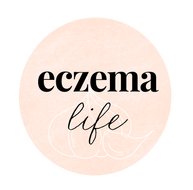Vitamin B5 & Skin Health
Benefits
Vitamin B5 (also known as pantothenic acid), plays an important central role in energy metabolism – in fact without vitamin B5, we would not be able to optimally use fats, carbohydrates or proteins as energy sources.
Pantothenic acid is shown to encourage wound healing and promote the growth of keratinocytes, which are crucial for maintaining a healthy barrier function in the skin. It also considerably increases glutathione levels which are powerful antioxidants in the skin.
Deficiency of vitamin B5 is uncommon as it is found in many different foods. However, deficiency symptoms can occur in people with poor digestion and symptoms include abdominal pain, leg cramps and pins and needles of the hands and feet.
Vitamin B5 deficiency questionnaire
Do you experience any of the following on a regular basis or on a reoccurring basis?
|
Note not all symptoms will be present in the one person. If you answered yes to 3 or more signs you could have a deficiency. As with all health questionnaire results, also check with your doctor to rule our more serious health problems.
Acne
Vitamin B5 supplementation (especially in higher doses) can effectively reduce oil production in the skin - the result is drier skin. So people with acne often benefit from taking high dose vitamin B5.
Eczema & TSW
As vitamin B5 reduces oil production in the skin, people with dry skin conditions such as eczema and topical steroid withdrawal (red skin syndrome) should avoid high doses of vitamin B5 (above 10mg per day). For people with dry skin, refer to the RDI recommended doses for a suitable dosage (see below).
Vitamin B5 dosages and food sources
|
Vitamin B5 |
Dosages (milligrams per day) |
Eczema-friendly food sources |
|
Also known as: Pantothenic acid |
Infants (AI) 1.7-2.2mg from breastmilk or hypoallergenic (dairy-free) infant formula Children (RDI) 1–4 years: 3.5 mg 5–12 years: 4-4.5 mg 13–18 years: 5-6 mg Adult (RDI): 4-6 mg |
1 cup (8oz) Sweet potato: 1.77mg^ 1 cup (8oz) cooked lentils: 1.26 mg ½ cup (4oz) cooked chicken: 1.09mg ½ cup (4 oz) cooked salmon: 0.92mg* 1 cup (8oz) celery: 0.25mg 1 cup (8oz) cooked white potatoes: 0.65mg 1 medium papaya: 0.53 mg* |
Note:
- As B-group vitamins are acidic, avoid mega-doses above 10 mg. In order to prevent deficiencies of other B vitamins, take vitamin B5 in supplement form along with other B vitamins, not as a single supplement.
Authors: Layland, K. and Fischer, K., 2017 'Vitamin B5 & Skin Health', Eczema Life Clinic.
Supporting research
Kobayashi, D., Kusama, M., Onda, M. and Nakahata, N., 2011. The effect of pantothenic acid deficiency on keratinocyte proliferation and the synthesis of keratinocyte growth factor and collagen in fibroblasts. Journal of pharmacological sciences, 115(2), pp.230-234.
Slyshenkov, V.S., Dymkowska, D. and Wojtczak, L., 2004. Pantothenic acid and pantothenol increase biosynthesis of glutathione by boosting cell energetics. FEBS letters, 569(1-3), pp.169-172.
Australian Government Department of Health and Ageing, 2006, ‘Nutrient reference values for Australia and New Zealand’, version 1.1 (updated March 2017).
Stanton, R, 2007, Vitamins, Rosemary Stanton’s Complete Book of Food and Nutrition.
Kelly, G.S., 2011. Pantothenic acid. Altern Med Rev, 16(3), pp.263-74.
Leung, L.H., 1995. Pantothenic acid deficiency as the pathogenesis of acne vulgaris. Medical hypotheses, 44(6), pp.490-492.
Leung, L.H., 1997. A stone that kills two birds: how pantothenic acid unveils the mysteries of acne vulgaris and obesity. Journal of Orthomolecular Medicine, 12(2).
